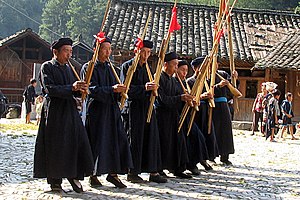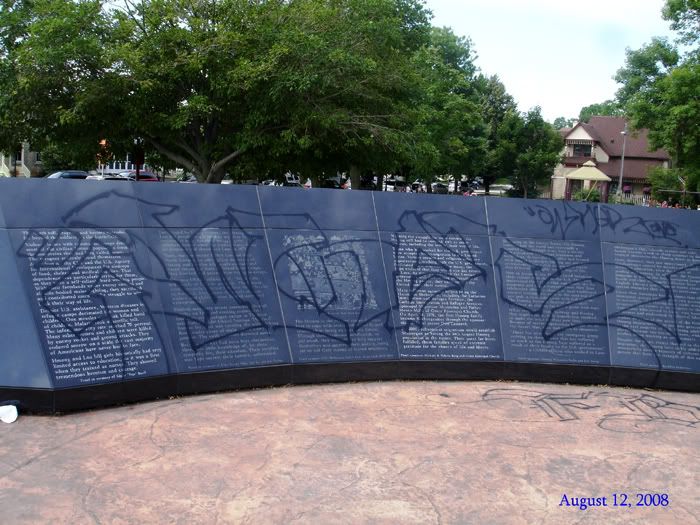By Rubén Rosario Article
Last Updated: 09/06/2008 09:57:15 PM CDT
Pat Hogan will never forget the day he dug a mass grave wide enough to fit the bodies of six children side by side.
It was Sunday afternoon, Sept. 13, 1998. Hogan, then a grounds worker and now the superintendent of Forest Lawn Cemetery in Maplewood, remembers being called in as he was getting ready to watch the Vikings-Rams game.
Instead, he listened to the game on the radio as he dug the final resting place for the victims — all siblings — of one of the worst mass murders in Minnesota, certainly in St. Paul, in recent memory.
"It is a sight I hope to never see again,'' Hogan recalled last week after he took me to the grassy burial site.
The kids — three boys and three girls, ages 5 to 11 — are on Lot 134, Block 33 on the cemetery's northwest corner, between the "Anderson" and "Hang'' graves.
I could not get there without Hogan's help. Ten years later, there are no markers, no headstones, nothing to identify who these children were and where they lie. I believe many people have walked over them without knowing it.
They deserve better, even now. They deserved far better than the fate that awaited them Sept. 3, 1998, as they played outside their apartment at 1541 Timberlake Road in St. Paul.
One by one, each was called to come inside by their then24-year-old mother, Khoua Her.
A child bride of Hmong descent by 12 and a former Thailand refugee camp resident, Khoua Her was reeling from personal, financial and emotional setbacks that included undiagnosed depression.
She was separated from her husband, the children's primary caretaker, whom she had accused of assaulting her on numerous occasions. She had lost her job as an assistant at a suburban marketing firm and was dependent on public assistance. Other than in-laws, she had no family here.
She was also dating a 17-year-old reputed gangster, a teenager who later told police about a bizarre suicide pact the two had agreed to carry out once he got out of jail.
KILLED ONE BY ONE
There is no greater or stronger love, bond or blind trust than that of a child toward a parent.
Khoua Her, regardless of her very real demons, betrayed that trust in a stunningly violent and tragic way.
Using the ruse that she wanted to play hide-and-seek inside the home with them, Khoua Her called in her oldest first.
Eleven-year-old Koua Eai Hang was first to die, according to court documents. He was found at the top of the landing of Apartment G's second floor, a black cloth wrapped tightly around his neck.
The others, called into the home in descending order by age, were found similarly strangled around the split-level apartment in the Mc-Donough public housing complex. They were Samson Hang, 9; Nali Hang, 8; Tang Lung, 7; A-ee, 6; and Tang Kee Hang, 5.
That's how they were laid to rest, inside child-size Monticello vaults, west to east, oldest to youngest.
Officials discovered the bodies after Khoua Her, who had put on a red ceremonial dress and wrapped an extension cord around her neck in a feeble suicide attempt before she called police to alert them to the parental slaughter.
Hundreds of mourners attended the burial the day after Hogan dug his hole. They prayed for the dead kids. They brought flowers and other mementos. Then they left
Khoua Her's attorney planned an insanity defense before the woman pleaded guilty to murder. She owned up to the crime. She was sentenced Jan. 8, 1999, to 50 years in state prison. The earliest she can walk out of the Shakopee Prison for Women is Jan. 5, 2032 — 24 years from now. If that happens, she still would have to satisfy terms of her probation until 2048.
On the day of her sentencing, before she was sent to prison, she talked nonstop for nearly two hours about the struggles in her life. But she never expressed in those two hours any real remorse for killing her children. I know. I was there.
"There will be no mention that Koua Eai kicked around a soccer ball and played marbles with neighborhood kids. No one will record for history that Nali loved to read or write, or that the kids kept a turtle and pigeons as pets, or what kind of aspirations they had,'' I wrote in a column published the next day.
"That's the true tragedy here.''
Still is, a decade later.
RARELY VISITED GRAVES
But there is always some positive to such a negative. We can spin it divine or natural or how we like.
The case brought to light, both locally and nationally, the culturally muffled taboo subjects of mental and domestic violence facing St. Paul and especially the nation's Hmong community entering a second generation of existence in 21st-century America.
By no means was this tragedy culturally exclusive. This is a universal problem.
"I truly believe that (the killings) ultimately ended up saving a lot of children as well as women, because it did bring to light, like never before, issues that were also affecting the American community at large," said Ilean Her (no direct relation to Khoua Her), executive director of the St. Paul-based Council of Asian Pacific Minnesotans.
Hogan recalls that Khoua Her called the cemetery a few years ago from prison.
"She was simply inquiring about the procedure and cost of marking the graves," Hogan said. Nothing came of the phone call.
"The Hmong community places the memorializatio n of their loved ones in very high regard and spares little expense in marking the grave,'' Hogan confided. "Some of the most beautiful and expensive markers and monuments here at Forest Lawn are on the graves of Hmong people."
Hogan has seen few visitors at the unmarked gravesite in recent years. Those he has seen, when he has looked up from his office, have been uniformed St. Paul cops.
"We've picked up flowers over the years that the cops have put down,'' Hogan said.
John Vomastek, a St. Paul police commander and head of the homicide squad at the time of the 1998 killings, has no idea which cops showed up at the burial site.
"I don't know who those officers are. But I did not even know we were doing that,'' Vomastek told me last week. "Maybe it's just these guys are still struggling with that, because it was a really sad day."
KIDS REMEMBERED
But someone — relative, cop or other — remembered these kids last week.
Hogan and I discovered candy placed atop the unmarked graves Wednesday, the 10th anniversary of the mass killings.
There were three cellophane packages, each containing two white-frosted devil's-food cakes with dark chocolate stripes. Multicolored candy balls, also wrapped in cellophane, had been placed nearby.
Hogan and Ilean Her both explained that the items signaled an offering to help feed and nourish the departed in the afterlife.
"The vaults were smaller than others because some of these kids were really young,'' Hogan said. "It's just a heart-breaking thing to see."
Elsewhere, a ceremony took place. The apartment where the murders occurred was "cleansed'' of the dead kids' spirits by Hmong spiritual elders and converted into a St. Paul public housing police substation in 2000.
At the gravesite Wednesday, I said a prayer for the kids as well as for their mom and then headed downtown, where the political circus, and the police presence making sure it would not be disrupted, was in full swing.
Rubén Rosario can be reached at rrosario@pioneerpress.com or 651-228-5454.
Source
Read more...










